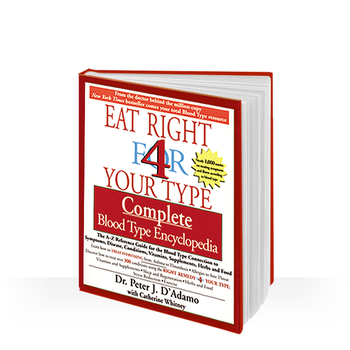A wikipedia of Dr. D'Adamo's research
C O N T E N T SSee Also
DescriptionA common polymorphism at codon 192 in the PON1 gene? (168820.0001) has been shown to be associated with increased risk of coronary heart disease (CHD) in Caucasian populations. However, the failure to find the association consistently in all Caucasian and non-Caucasian populations suggests that it is not a functional mutation? but may mark a functional mutation present in either PON1 or a nearby gene. Sanghera et al. (1998) described a common polymorphism at codon 311 of the PON2 gene: cys311 to ser (PON2*S; 602447.0001).(1) They found that this polymorphism, alone or in combination with the gln192-to-arg (Q192R) polymorphism of the PON1 gene, is associated with CHD in Asian Indians. They presented data indicating that the PON1*B and PON2*S alleles contribute synergistically to the CHD risk in this sample and that this genetic risk is independent of the conventional plasma lipid profile. Heinecke and Lusis (1998) reviewed the results of previous studies of the PON1 Q92R polymorphism in CHD and raised the question of whether these PON polymorphisms support the oxidative damage hypothesis of atherosclerosis. (2) In genomewide scanning to identify noninsulin-dependent diabetes mellitus (NIDDM; 125853) susceptibility genes in Pima Indians, Prochazka et al. (1995) found linkages of DNA markers at 7q21.3-q22.1 with both quantitative traits related to glucose uptake and storage and possibly with NIDDM itself. AbstractsC O N T E N T SDietary antioxidants and paraoxonases against LDL oxidation and atherosclerosis developmentHandb Exp Pharmacol. 2005;(170):263-300. Aviram M, Kaplan M, Rosenblat M, Fuhrman B.
1. Sanghera, D. K.; Aston, C. E.; Saha, N.; Kamboh, M. I. DNA? polymorphisms in two paraoxonase genes (PON1 and PON2) are associated with the risk of coronary heart disease. Am. J. Hum. Genet. 62: 36-44, 1998. 2. Heinecke, J. W.; Lusis, A. J. Paraoxonase-gene polymorphisms associated with coronary heart disease: support for the oxidative damage hypothesis? (Letter) Am. J. Hum. Genet. 62: 20-24, 1998. |
COMPLETE BLOOD TYPE ENCYCLOPEDIA
The Complete Blood Type Encyclopedia is the essential desk reference for Dr. D'Adamo's work. This is the first book to draw on the thousands of medical studies proving the connection between blood type and disease. Click to learn more
Click the Play button to hear to Dr. Peter J. D'Adamo discuss .
|
The statements made on our websites have not been evaluated by the FDA (U.S. Food & Drug Administration).
Our products and services are not intended to diagnose, cure or prevent any disease. If a condition persists, please contact your physician.
Copyright © 1996-2024, Hoop-A-Joop, LLC, Inc. All Rights Reserved. Privacy Policy | Log In